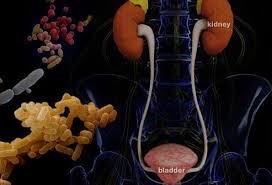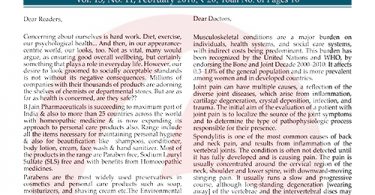Significance of Neonatology
Neonatology is a specialized branch of pediatrics ranging from Birth to 30 days of age. It is a highly vulnerable time for a neonate who is completing many of the physiologic adjustment required for extra -uterine existence. Most of the problems in neonatology are due to poor adaptation because of
1. Asphyxia – Delayed first cry at birth will cause Hypoxia of the brain leading to hypoxic encephalopathy.
2. Prematurity – Complications in preterm delivery is mainly due to underdevelopment of the organs. There is respiratory distress and inability to maintain oxygen saturation due to immature lungs. There are high chances of septicemia due to immature and undeveloped immune system.
3. Life threatening congenital anomalies- Poses immediate risk to life mainly with anomalies of vital organs.
4. Adverse effects of delivery – Birth trauma can cause concussion of brain leading to Cerebral palsy; nerve injuries can cause brachial palsy etc.
Neonatal period is a vulnerable time not only for the neonate but also for the parents. They are in an extreme state of anxiety, making the observations blurry.
Eliciting history from anxious parents is a skill that a neonatologist needs to have. Ante natal history, Birth history, Past and Family history of mother becomes crucial.
As the Symptomatology have more of signs than symptoms in neonates, the knowledge of what is normal in a neonate is very essential to identify common from characteristics.
The cases discussed below would allow us to understand various aspects of case taking in neonatal practice, formation of totality and various methods of management of neonatal cases.
Case1:
A two day old baby was referred to the hospital by a pediatrician for homeopathic treatment for complaints of persistent vomiting since birth.
Birth History: Preterm Ceserian delivery due to leaking per vaginum.
Birth weight -1.85 kg. Baby had cried immediately after birth. Apgar score was 9/10. Baby was put on antibiotics and perinorm drops for 2 days but there was no improvement and vomiting persisted. Hence the baby was referred to our hospital.
On Examination:
Weight – 1.85 kg Gestational age – 30- 32 wks
Anterior fontanel – open Cry / tone / activity – Good Chest – clear P/A – Distended,
Liver 1cm palpable. Spleen not palpable Soft lump was palpable in epigastric region with visible peristalsis.
An X-ray Abdomen with Chest was ordered immediately which revealed a large fundic shadow
CAUSES OF VOMITING IN NEONATE:
1. Amniotic fluid aspiration
2. Meconium fluid aspiration
3. Pylorus spasm
4. HPS [ hypertrophic pyloric stenosis ]
5. Infectious causes like septicemia , meningitis etc
The first two causes of vomiting are due to gastric irritation due to aspiration of meconium or amniotic fluid and would generally settle after a stomach wash. Hence a stomach wash was given with normal saline. But the vomiting persisted. Since there was no hypo or hyperthermia and anterior fontanel was not boggy septicemia and meningitis was clinically ruled out. Hence the final diagnosis was Pylorospasm with differential diagnosis as HPS.
Based on the observations and understanding of probable diagnosis, totality was formed and repertorization was done.
Totality:
1. Vomiting after mother’s milk
2. Vomiting in nursing infants, of milk
3. Induration of pylorus
4. Constriction of pylorus
Repertorization:
Materia Medica Reference:
Phatak mentions “Induration of pylorus” in SILICA Hence Silica 30 one dose was given stat.
Follow up: There was no vomiting after the dose of silica and hence the child was discharged the next day. The child followed up after 3 months for mild URTI and weight of the child was 5.6 kg (more than triple the birth weight in 3 month).
The case helped us understand the following concepts:
– Importance of Clinico-pathalogical co-relation.
– How to form a totality based on signs more than symptoms
-How to convert signs to rubric
Case 2:
1 month old baby was brought with complaints of pustular eruptions, discrete all over body since 15 days with fever.
Evolution: Complaint started 15 days back with pustular eruptions around neck & groin. Taken allopathic treatment but was not better. Lesions were spreading & few lesions were with indurations. Child also had low grade fever with reduced appetite since 2-3 days. Eliminations were normal.
Examination:
Temp: 100oF;
Anterior Fontanels: NORMAL; Sucking: GOOD RS: CLEAR Skin: Pustule discrete all over with indurations in few. Redness with minimal warmth + Diagnosis: RECURRENT STAPHYLOCOCCAL SKIN ERUPTIONS What is the danger in managing this case?? ….. Child can go into septicemia very quickly in neonatal age group due to lowered immunity.
Totality: SUPPURATION WITH INDURATION….. NO OTHER SYMPTOMS AVAILABLE
As no totality was available mothers case was defined.
TOTALITY OF MOTHER:
1. Anticipatory anxiety
2. Conscientious
3. Timid
4. Obstinate
5. Chilly
6. Tendency to suppurations
7. Aversion – milk
Remedy for mother: Silica One could see that mother’s tendency and child’s first expression were same which depicts a constitutional defect in both mother and child. Hence mother was prescribed Silica 200 single dose.
Follow up: Within 24 hours the child was afebrile, appetite improved and lesions started showing signs of healing. There was no new lesion either.
Conclusion: If you see a common link between child’s illness and mother’s constitutional tendencies or maternal familial tendencies then addressing mother along with the child will help in giving better results. In neonatal age, the mother and child is a still a single unit with only physical separation.
Case 3 :
A 4 day old, unconscious, male baby was referred from Primary Health Center for Emergency NICU management at 10.35 am. The child was a “Precious child” born to a couple after 12 yrs of marriage.
Evolution: There was a history of fever with refusal to feed since 3 days. Now since few hours there is no cry and the child is not responding to any stimuli.
Birth history: Antenatal history: uneventful Preterm vaginal home delivery, cried immediately after birth.
On Examination:
No spontaneous activity
Temp: 99.2 F Cry – no cry to painful stimuli
Anterior Fontanel- Boggy R.S – Basal crepts present,
Respiratory Rate- 56/min C.V.S – S1S2 Normal ,
Heart Rate- 140/min P/A – Soft
CNS tone– Hypotonia
Pupils -sluggish reaction to light Reflexes- Absent Diagnosis: Septicemia with Meningitis with?
Hydrocephalus in coma Pediatrician in NICU prescribed parenteral antibiotics and all other standard allopathic treatment but there was no response.
Follow up in 24 hrs: General condition- Same; Temp – 100-101 F No spontaneous activity; No cry Pupils dilated fixed; Developed Sun set sign
Conclusion: Disease progression; Hydrocephalus increasing. Poor response to treatment
Pediatrician Assessment : ? Brain Dead Action: – No Use of any medications. – Pediatrician advised to take baby back home. – No medicinal intervention. But the parents were not willing to take the child home as the child had conceived after 12 yrs of marriage. Though from poor family, they were not willing to give up hope. They were worried about the child and wanted to continue the treatment till the last breath.
Observation of child: – Unconscious, no activity – Cry- Not cried even after painful stimuli. – Anterior fontanel tense – Eyes- Sun set sign – Clenched fingers – Closed thumb – Dilated pupils – Baby passed urine 2-3 times in 24 hrs – O/E bladder- Palpable, distended Totality: Unconsciousness / Coma hydrocephalus in Eyes turned downward Clenched fingers Closed thumb Bladder paralysis Dilated pupils
Repertorization:
Remedy Differentiation:
1. Cuprum met
2. Helleborus
3. Hyoscyamus
Cuprum Met: Convulsions and spasms Distortion of head on one side and backward with red face during convulsion. Restlessness between the attacks. Spasms from peripheral to center.
Helleborus: Stupor, dullness of sensorium. Asymmetry: Involuntary movement of one arm and one leg other extremities paralyzed. One pupil larger than other. Suppressed urine with coffee ground sediment. Pulse slow and feeble, respiration slow, temperature low. Torpidity and apathy.
Hyoscyamus: Loss of consciousness with attack of cerebral congestion. Pupils dilated. Clenched fingers and closed thumb. Retention of urine—bladder paralysis
FINAL REMEDY: Hyoscyamus
Susceptibility assessment:
–Pathology: Meningitis with hydrocephalus
– Vitality: Compromised
– Characteristics: Few
Potency: 50 Millicimal Potency was chosen due to: Involvement of vital organ Vitality was poor Need to accelerate the cure by giving freq. repetition Less chance of aggravation
Hyoscyamus 0/1 drops first dose was given at 10.15 pm on 19th June
Follow up summary:
– Normal activity within 36 hours
– Child was put on Breast feeding within 48 hours
– Child discharged on the 4th day
Total 3 doses of Hyoscyamus 0/1 was given
Final Conclusion:
Case taking in Neonates:
Patience: Patience is required for: Eliciting history from anxious parent. Examining irritable/cranky child Handling anxious relatives. Keeping ourselves calm in critical situations
Observations: The physician has to develop an acumen of keen observation. Accurate clinical observation of progress of illness to quickly identify complications if any as the pace of illness is fast in neonates. Homeopathic observations to understand evolution and identify characteristics from common.
Minimal Interpretation: As signs are more prominent than symptoms in neonates, physician has to confirm the signs that are observed by parents during case taking.
Knowledge of Normalcy: Having the knowledge of normalcy in pediatrics is extremely important to help a homeopath evaluate the signs and symptoms into common or characteristic, thus helping them form a totality.
Knowledge of ancillary measure in management: Knowledge of oxygenation, fluid and electrolyte management, temperature management etc is important in neonate management.
Knowledge on Indisposition:Knowledge of diet history and medicinal history is important in identifying indispositions. Orienting the parents on indisposition and guiding them to manage the child is important in managing indisposition.
Birth History and Mothers Obstetric History: Is crucial in understanding the current illness and helpful in managing neonates and relatives.
Management Plan in Neonates
a) The physician should first differentiate an indisposition from an illness.
b) If the indisposition doesn’t get rectified by managing the precipitating factors then a remedy has to be given based on the available totality
c) If the totality is available the indicated remedy may be prescribed to the child.
d) Understanding the Mother’s (Mo) constitution is important especially when there is no clear picture in the child. Constitutional remedy (C.R.) of mother or remedies related to C.R. can be thought of in these situations.
Courtesy: THE LIGA NEWS





